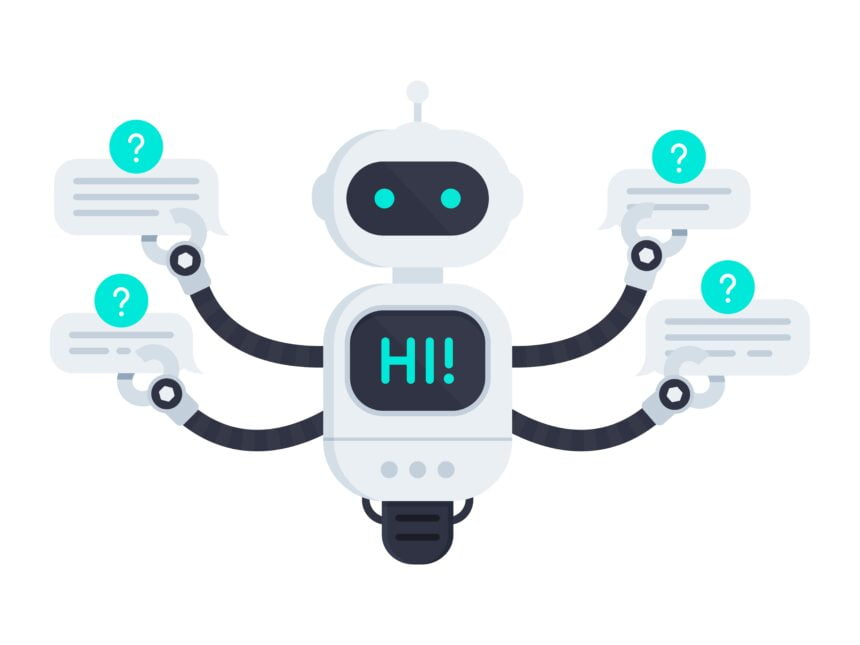Modern robots are infinitely more intelligent and adaptable than their early predecessors. One of the factors that has historically differentiated humans from robots has been the fact that humans are capable of learning from past experiences and their environment. This is rapidly changing, as a new generation of robots are capable of learning from the same inputs and adapting their behavior as a response.
- Machine perception will drastically improve functionality of robots
- What are the challenges with machine perception in modern robots?
- Modifying machine perception algorithms for more active learning models
- Developing new sensory systems to process inputs
- Developing the best view locations for smart robotic sensors
- Machine Learning Capabilities Are Only as Good as Their Weakest Link
This is an evolving field known as “smart robotics.” Machine perception is playing an important role in this new field.
Machine perception will drastically improve functionality of robots
In order to learn and evolve, robots must be able to process new inputs. They have depended on sensory systems for the majority of their existence. However, up until recently, their ability to conceptualize this data was rather primitive.
Machine perception is the next stage of artificial intelligence (AI) algorithms for these automatons. Used in conjunction with more sophisticated machine learning systems, it is making robots more adaptable to a continually evolving environment.
A number of smart robots are already making their imprint on the industries they are being used. The University of California San Diego published a post a couple of years ago about a robot dependent on machine perception, which had just turned a year old. According to the authors, this robot was a miracle of the robotics industry. The authors point out that robots have made a number of advances, but still struggle to replicate the complexity of the human brain. It will take time to fully meet this standard, but this robot was a huge breakthrough.
A number of companies will depend on these newly programmed automatons. Ted Kohli, the founder of Kohli Ventures, expects they will play a vital role in cutting edge technology in countless industries.
What are the challenges with machine perception in modern robots?
The benefits of machine perception are becoming more evident all the time. However, there are a number of challenges that data scientists and AI engineers must overcome to improve the future of robotics. Rewired has shared some of the ways that they are improving machine perception to bolster smart robots.
Modifying machine perception algorithms for more active learning models
The biggest mistake that programmers made with early machine perception algorithms was treating them as passive systems. They relied on poorly thought out assumptions about the biological systems they were based off of. More modern machine perception algorithms recognize that learning is a more active, multi-sensory process. They are being developed with this in mind.
Developing new sensory systems to process inputs
Most early smart robotics systems were dependent on more antiquated sensory systems. This is going to change as new sensors are developed. Newer sensors are more capable of collecting inputs that can be interpreted for mechanical systems.
Developing the best view locations for smart robotic sensors
The quality of inputs is highly dependent on the positioning of the sensors. Finding the right view locations is a very important part of the process. Many smart robotics systems had difficulty getting this part of the process right. Russell Graves of CoSMoS Laboratory wrote about a new heuristics model that significantly improved positioning and the quality of data needed for machine perception.
“This work presents a heuristic for describing the next best view location for an autonomous agent exploring an unknown environment. The approach considers each robot as a point mass with omnidirectional and unrestricted vision of the environment and line-of-sight communication operating in a polygonal environment which may contain holes. The number of robots in the team is always sufficient for full visual coverage of the space. The algorithm successfully deployed agents into polygons which may contain holes. The efficiency of the deployment method was compared with random deployment methods to establish a performance metric for the proposed tactic. It was shown that the heuristic presented in this work performs better the other tested strategies.”
Machine Learning Capabilities Are Only as Good as Their Weakest Link
Machine perception is the first stage of the machine learning process. If smart robots are unable to collect accurate and informative data, they will be unable to evolve to meet the challenges of their environment. This requires both sophisticated systems for interpreting inputs, as well as valid sensory systems for collecting the data.
As machine perception solutions become more advanced, smart robots will evolve at a much faster pace. This will be a wonderful development for the fascinating field of smart robotics.

